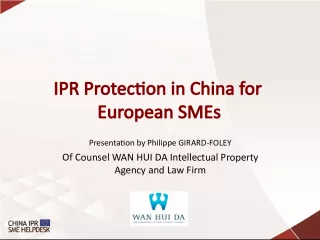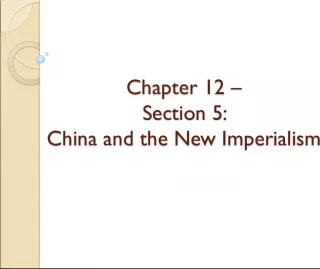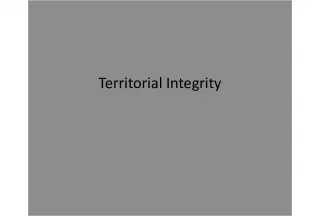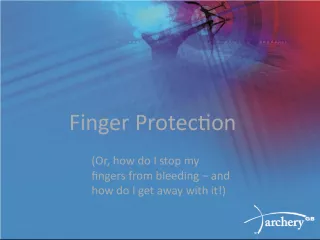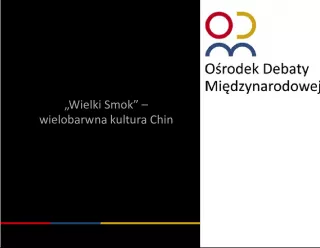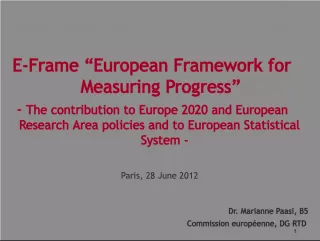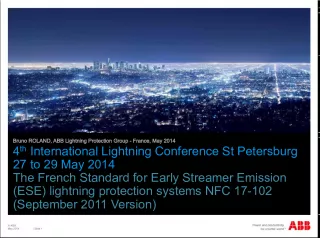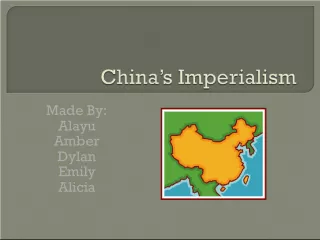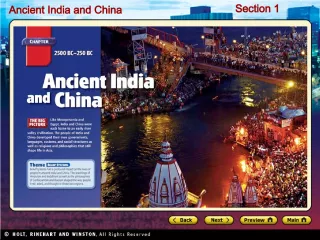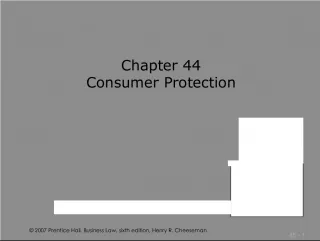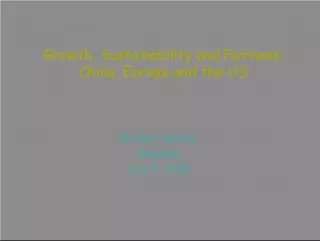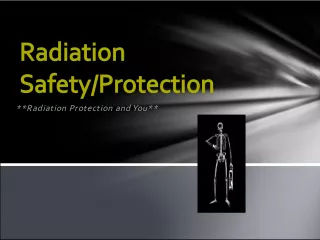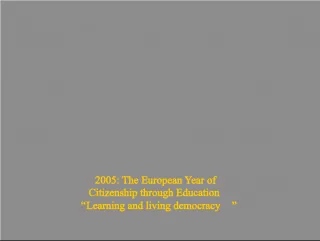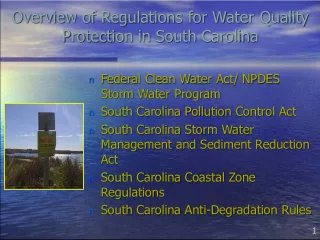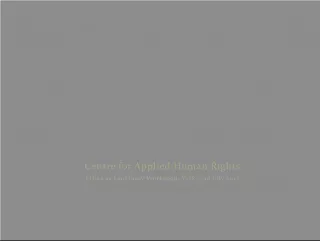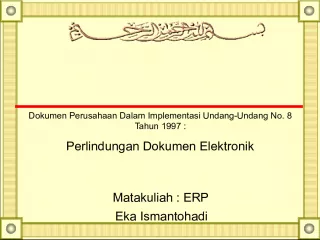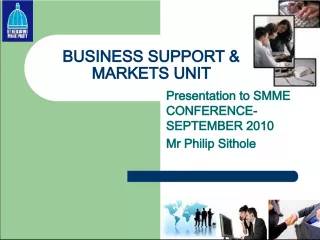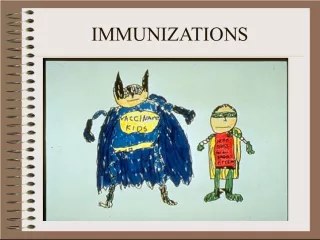IPR Protection in China for European SMEs
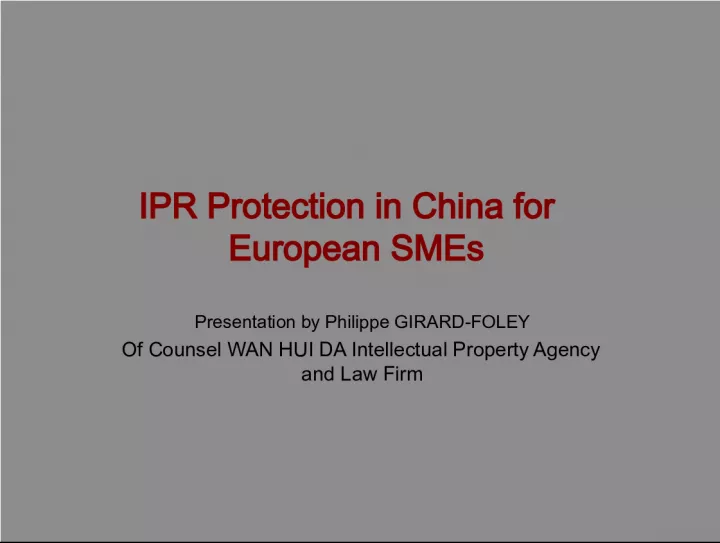

In this presentation, Philippe Girard Foley, Of Counsel at WAN HUI DA Intellectual Property Agency and Law Firm, provides an overview of IP protection in China and the different ways European
- Uploaded on | 0 Views
-
 kripaanand
kripaanand
About IPR Protection in China for European SMEs
PowerPoint presentation about 'IPR Protection in China for European SMEs'. This presentation describes the topic on In this presentation, Philippe Girard Foley, Of Counsel at WAN HUI DA Intellectual Property Agency and Law Firm, provides an overview of IP protection in China and the different ways European. The key topics included in this slideshow are . Download this presentation absolutely free.
Presentation Transcript
Slide1IPR Protection in China forEuropean SMEs Presentation by Philippe GIRARD-FOLEY Of Counsel WAN HUI DA Intellectual Property Agency and Law Firm
Slide2Overview of IP Protection in China
Slide3Topics• Protected IPRs in China • Current Status of IPR Infringement in China • Enforcement Options in China
Slide4Protected IPRs in China• Patent; • Trademark; • Copyright (including software); • Trade Secret; • Geographical Indication; • Others (trade dress/packaging, trade name, new varieties of plants, integrated circuit/semi conductor, etc.)
Slide5Patent• Must file patent applications with State IP Office (SIPO); • China is “first to file” country; • Use of registered patent agent or through PCT filing; • Patents are divided into three types: invention, utility model, and design; • Utility model and design are essentially issued as an unexamined patent; • Protection Term: Invention: 20 years; Utility Model/Design: 10 years • Primary Legal Source: PRC Patent Law
Slide6Trademark• Must file trademark applications with the Chinese Trademark Office (CTO), which is part of the State Administration for Industry and Commerce (SAIC); • China does not grant trademark rights based solely on use without registration (“first-to-file” system), except in the case of well-known marks; • The same trademark, if used for different products, should be registered in a number of appropriate classes; • The term of a registered trademark is 10 years from the granting by CTO, and may be renewed without limitations; • Primary Legal Source: PRC Trademark Law
Slide7Copyright • Copyright protection is available for all works provided that the work is in any tangible form; • Copyright works are automatically protected upon their creation, however, the registration with the China Copyright Office gives a significant advantage in the event of future disputes involving the ownership of materials; • Copyright protection is ordinarily given a term of copyright protection enduring for the author's life plus an additional 50 years after the author's death. For works made for hire, the duration of copyright protections will be 50 years from publication; • Primary Legal Source: PRC Copyright Law PRC Software Protection Regulation
Slide8Trade Secret• Conditions: – Technical and/or management information that is unknown to the public; – Can bring economic benefits and is of practical value; and – Which the rightful party has adopted measures to maintain its confidentiality. • Trade secrets do not require registration • Trade secret protection endures so long as the requirements for protection continue to be met • Primary Legal Source: PRC Anti-Unfair Competition Law (“AUCL”)
Slide9Geographical Indication• Parallel Mechanism for Protection: – Trademark system administered by CTO. Example: PARMA HAM, SCOTCH WHISKY – Geographical indication system administered by General Administration of Quality Supervision, Inspection and Quarantine (“AQSIQ”). Example: France Cognac • Primary Legal Source: PRC Trademark Law Provisions on the Protection of Geographical Indication Products
Slide10Others• Trade dress (packaging) and Trade Name (business name) – Legal Basis: AUCL • Integrated Circuit (semiconductors) – Legal Basis: Regulations on Protection of Integrated Circuit Layout Design • New Varieties of Plants – Legal Basis: Regulations on the Protection of New Varieties of Plants
Slide11Current Status of IPR Infringement in China• Affecting virtually all industry sectors • Quality of fakes increasing • Infringers going underground, more sophisticated and organized • Chinese government has made a lot of efforts in protecting IPR, but one must admit that it will be a long battle
Slide12Enforcement Options in China• Administrative: Seize or destroy infringing product/mould/equipment, impose fines, confiscation of illegal revenues, but no compensation to the aggrieved party. Both ex officio raid actions and raid per application of brand owners • Civil: Compensation and injunctions • Criminal: Jail term for individuals guilty of counterfeiting
Slide13Enforcement Authorities• Administrative Approach: Administrations for Industry and Commerce (AIC) Technical Supervision Bureau (TSB) Copyright Bureau Intellectual Property Office (IPO) Customs • Civil Enforcement: Civil Tribunals of the Courts • Criminal Prosecution: Public Security Bureau” (PSBs) = police “Procuratorates”= prosecutors Criminal Tribunals of the Courts
Slide14Administrative Approach1. Raid actions by AIC • Legal Basis: Trademark Law Anti-Unfair Competition Law • Coverage: Trademark Infringement Trade Dress Infringement Trade Name Infringement Trade Secret Misappropriation • A primary choice for brand owners when resorting to administrative authorities.
Slide15Administrative Approach2. Raid actions by TSB • Legal Basis: Product Quality Law • Coverage: Poor quality products (including fake goods)
Slide16Administrative Approach3. Copyright Bureau • Legal Basis: Copyright Law • Coverage: All copyrightable works, in practice particularly software, video and audio contents (tangibles, such as CD or DVDs, and intangibles, such as those disseminated online), publications… etc. 4. IPO • Legal Basis: Patent Law • Coverage: Patented Products
Slide17Administrative Approach5. Customs • Legal Basis: Regulations on Customs Protection of IPR • Coverage of IPRs: ONLY Trademark, Patent, and Copyright • Customs active only in border areas, but cover both import and export • Recordal system optional but highly recommended • Customs has no jurisdiction against factory suppliers • Bonds compulsory when intercepting goods
Slide18Civil Enforcement Trademark Law and Civil Procedure Code offer: • Compensation –Actual harm or infringer profits –Statutory damages up to RMB500K (about 50K Euros), or 1000K in patent cases. –Vendors can be exempted from compensation by disclosing legitimate source of goods • “Asset Preservation” –Ex-parte seizure of infringer assets –Subject to bond • Preliminary and permanent injunctions • Destruction of fake goods and production equipment
Slide19Civil Enforcement• Evidence gathering – No discovery – “Evidence preservation” by court – Notarized purchase of infringing products – Private investigations – Leverage administrative enforcement for evidence gathering
Slide20Civil Enforcement• Legal proceedings are necessary when the infringement is too complicated for enforcement agencies to handle, it is possible to obtain considerable damages • As in other country, the courts are the final and most authoritative organ in handling infringement cases • The IPR owner may directly start legal proceedings without resorting to administrative authorities first, or take further legal actions after administrative enforcement
Slide21Criminal Prosecution• Three options for Criminal Complaints: – File first with administrative authorities, then seek transfer to PSB – Direct complaint to PSB – Private prosecution by IP owner with court with evidence obtained in administrative raid or otherwise • Up to seven years imprisonment and fine • Numerical thresholds: Value of goods or numbers of goods/copies
Slide22Enforcement Options in China: Assessment• System works well on paper • Administrative enforcement attractive in terms of time and cost – Utility mainly for evidence gathering • Criminal enforcement – Time-consuming – But only way to create true deterrence • Civil enforcement interesting – Worthwhile mainly if infringers have assets – Also as deterrent • Balancing act: keeping good relations with all
Slide23Thank you for your attention
